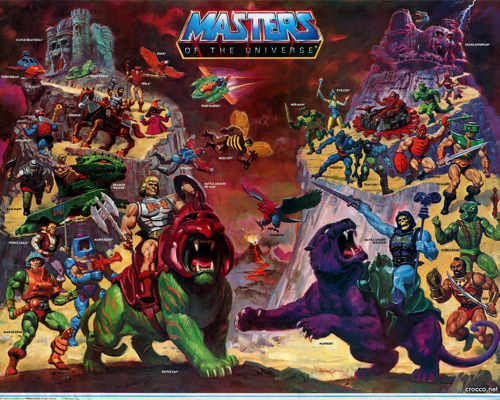
Masters of the Universe®, Mattel Inc.
Who gets it, who doesn’t and would you want it anyway?
“Shihan” – most often translated as “Master Instructor”. Sound pretty important?
The term wasn’t used much when I first started Aikido, but it seems to be the title to have nowadays.
In Japanese, the Kanji for Shihan (師範) break down to “instruct” and “model” – or “model instructor”. This makes sense, especially considering normal Japanese methods of instruction – this would be the guy that everybody else copies, or hopes to copy.
The usage of the word varies from art to art. Some arts issues Shihan certifications, some don’t. Some arts (like Shodokan “Tomiki” Aikido, which only has two, although it is also used as an organizational title) have a very limited number of Shihan, some have many. In Judo, Jigoro Kano is usually called “Kano Shihan”, as Morihei Ueshiba is often called “O-Sensei” in Aikido.
What does “Shihan” mean in the Aikikai (I’m only going to talk about the Aikikai here)?
Nothing, really….
According to the International Regulations you don’t need to be a Shihan in order to head an organization – you just have to be a 4th dan or higher.
Similarly, you don’t need to be a Shihan in order to issue promotions – you just have to be a 4th dan or higher.
The title carries no additional privileges, no additional powers or responsibilities, just bragging rights as a “Master Instructor”.
Once upon a time in Aikido, all of the Shihan were Japanese. This makes sense, as Aikido is a relatively young martial art, and the Japanese had a head start on the rest of the world.
After some time had passed, and non-Japanese instructors had begun to reach higher levels, some people began to call those people “Shihan” too – which certain other people questioned, and this statement by Masaki Tani of the Aikikai Hombu International department appeared in an interview with Aikido Journal in 2000:
AJ: The title shihan (lit. “master teacher”) is used to refer to a certain portion of teachers, but how is this title used and applied within the Hombu? Are there any non-Japanese shihan?
Tani: According to the Hombu’s internal rules, the term “shihan” is applied to teachers within the Hombu Instructor Department who have reached sixth dan. Teachers fifth dan and below are referred to with the title shidoin (instructor). Regarding the situation outside the Hombu, shihan is one of the instructor ranks listed in the International Regulations. Officially recognized organizations can create their own teaching sections (shidobu), examination committees, and so on, and the three possible instructor ranks are shihan, shidoin, and fukushidoin (assistant instructor). Officially recognized organizations have the authority to appoint their own shidoin and fukushidoin as they see fit. The shihan rank, on the other hand, is a title that the Hombu authorizes for use by a certain portion of instructors ranked sixth dan or above within those organizations.
In fact, however, there are currently no teachers-Japanese or non-Japanese-authorized under the International Regulations to use the title shihan. Not a single one. There are, however, certain teachers who have gone abroad-at the request of the Founder or former Doshu Kisshomaru-to teach aikido in various places around the world, and the Hombu regards those individuals as “Hombu-dispatched shihan” (Hombu hakken shihan).
I can see why some people find it strange that there are no teachers abroad authorized to use the title shihan. Some even think that a teacher has to be Japanese in order to qualify as a shihan, but that’s not the case at all. We think that eventually we’ll need to start certifying shihan under the International Regulations.
So, at the time of that interview, it appears that there were no Shihan at all outside of Aikikai Hombu and a few officially dispatched instructors teaching abroad.
That was eventually addressed in the International Regulations, which were revised at the end of 2000.
Apparently, there was still some confusion, and this was addressed in a statement which appeared on the Aikido Journal website some years ago (around 2002/2003), again from Masaki Tani.
[I have recently received two email messages from Masaki Tani Sensei of the Aikikai International Department that provide a detailed explanation of Hombu Dojo’s policy with respect to both Japanese and foreign shihan. I have excerpted the relevant portions of his communications. Only minor language and formatting changes have been made. We wish to thank Tani Sensei for placing his confidence in Aikido Journal to disseminate this information. -Ed.]
——————–
Dear Stanley,
As I mentioned in my previous message, please feel free to use the information in my previous message about Shihan at any place and in any form but presenting my message as it is. You can state that the source of the information is Tani of the Int’l Dept. of Hombu.
——————–
Recently I read, at the Aikido Journal’s site, the debate about “Shihan”. Some people are misinformed while other people have correct information and understanding about the matter. Hoping it would be help for you and your fellow Aikidokas and your readers, I would offer the following information relating to this issue.
* In Japan, there are many Shihan not mentioned here, who are professional Aikido instructors holding 6th Dan up allowed to use the title of Shihan according to the traditional rules existed even before the promulgation of Aikido World Headquarters’ International Regulations.
[snip]
There are four types of Shihan as follows.
1) Japanese Aikido instructors who reside outside Japan with a mission given by Hombu Dojo-Aikido World Headquarters to propagate Aikido at overseas. They are :
(in the U.S.A.)
Seiichi SUGANO (8th Dan)
Kazuo CHIBA (8th Dan)
Yoshimitsu YAMADA (8th Dan)
Mitsuya KANAI (8th Dan)
(in France)
Nobuyoshi TAMURA (8th Dan)
(in Germany)
Katsuaki ASAI (8th Dan)
2) Japanese Aikido instructors who left Japan and reside outside Japan by their own intention and determination to propagate Aikido at overseas. They are :
(in the U.S.A.)
Ichiro SHIBATA (7th Dan)
(in the UK)
Minoru KANETSUKA (7th Dan)
(in Switzerland)
Masatomi IKEDA (7th Dan)
(in Italy)
Yoji FUJIMOTO (7th Dan)
Hideki HOSOKAWA (7th Dan)
(in Spain)
Yasunari KITAURA (7th Dan)
(in Thailand)
Motohiro FUKAKUSA (7th Dan)
(in Malaysia)
Jun YAMADA (7th Dan)
(in Argentina)
Katsutoshi KURATA (7th Dan)
Kenzo MIYAZAWA (7th Dan)
(in Brazil)
Ichitami SHIKANAI (7th Dan)
Reishin KAWAI (8th Dan)
3) Instructors who are the members (incl. ex-members) of Hombu Dojo’s Instructors Department. Hombu instructor becomes Shihan when given 6th Dan. They are :
Shigenobu OKUMURA (9th Dan)
Sadateru ARIKAWA (9th Dan)
Hiroshi TADA (9th Dan)
Masatake FUJITA (8th Dan)
Seishiro MASUDA (8th Dan)
Masando SASAKI (8th Dan)
Nobuyuki WATANABE (8th Dan)
Seishiro ENDO (8th Dan)
Masatoshi YASUNO (7th Dan)
Shoji SEKI (7th Dan)
Koichi TORIUMI (7th Dan)
Tsuruzo MIYAMOTO (7th Dan)
Yoshiaki YOKOTA (7th Dan)
Hayato OSAWA (7th Dan)
Yukimitsu KOBAYASHI (6th Dan)
Shigeru SUGAWARA (6th Dan)
Takanori KURIBAYASHI (6th Dan)
Takeshi KANAZAWA (6th Dan)
4) Shihan appointed by Hombu based on the rules set forth in the Aikido World Headquarters’ International Regulations and Rules for Appointment of Shihan. They are :
Frank DORAN (7th Dan, California Aikido Association, U.S.A.)
Robert NADEAU (7th Dan, California Aikido Association, U.S.A.)
William WITT (7th Dan, Takemusu Aikido Association, U.S.A.)
Christian TISSIER (7th Dan, FFAAA, France)
Paul C. N. LEE (7th Dan, Republic of China Aikido Association)
Kenneth E. COTTIER (6th Dan, British Aikido Federation)
Jan HERMANSSON (6th Dan, Swedish Budo Federation – Aikido Section)
[snip]
M. Tani International Department Hombu Dojo
Notes:
– For 1) and 2) above, a Certificate signed by Doshu has been given to each Shihan. However, no written rules exist for appointment of these Shihan. The arrangement reflects the historical and traditional facts.
– As for 3) above, Hombu Dojo’s internal rules are applied.
– For 4) above, a Certificate signed by Doshu has been given to each Shihan.
I would like to add some more remarks about Shihan issue.
– Shihan in Japan : In Japan, before the International Regulations were promulgated about 20 years ago, there already existed many Aikido Dojo. I have heard then Hombu placed a verbal explanation that a professional Aikido instructor who was teaching Aikido in his own Dojo or other place could use the title of Shihan when awarded 6th Dan. Thus, in Japan there are many Shihan. Steven Seagal was one of them when he was running his own Dojo in Osaka. But for these Shihan in Japan, no certificate of Shihan is issued by Hombu.
– Shihan in accordance with the International Regulations and Rules for Appointment of Shihan
– It is prescribed that the Committee for Appointment of Shihan shall be held once in December every year, and the result shall be announced in January of the following year. In December of the last year, the 1st Committee was held and seven persons were appointed as Shihan out of nine candidates. This was announced in January this year, but it does not have anything to do with Kagami Biraki. The timing of the anouncement depended simply on my personal workload.
– Papers/certificates signed by the Founder or Kisshomaru Doshu : As per the strong and persistent requests of individuals returning to his/her country completing the practice for several years at Hombu Dojo, the Founder and Kisshomaru Doshu signed in the documents in which it was stated that the holder of said document was a Shihan or allowed to propagate Aikido in his/her country. It was mostly before the International Regulations were promulgated in 1980. When someone mentions such a document, I say “Please keep it as an invaluable souvenir from the Founder or Kisshomaru Doshu.” The paper is not compatible with the rules of the International Regulations, but we cannot deny the authority of the Founder or Kisshomaru Doshu.
– New Doshu’s policy : Some people seem to believe that after Moriteru Doshu took his office as new Doshu, the new Doshu’s (or Hombu’s) policy was changed. But this is not true. For example, the modification to the International Regulations to admit more than one Recognized Organization in one country was already discussed and prepared a couple of years prior to the decease of Kisshomaru Doshu. The International Regulations were established more than 20 years ago as I mentioned above. Since then no policy change was made. The fact is that no effort was made to make the rules of the Regulations well understood by the public (Aikido world) and many of the rules were not applied or implemented.
If you read through the statement you’ll find some interesting omissions (Mitsugi Saotome doesn’t appear on Tani’s list, for example), but I don’t think that it was meant to be an exhaustive, formal statement, just an informal clarification.
The regulations appear to be fairly straightforward, as is Tani’s clarifying statement – until we get to this section:
– Shihan in Japan : In Japan, before the International Regulations were promulgated about 20 years ago, there already existed many Aikido Dojo. I have heard then Hombu placed a verbal explanation that a professional Aikido instructor who was teaching Aikido in his own Dojo or other place could use the title of Shihan when awarded 6th Dan. Thus, in Japan there are many Shihan. Steven Seagal was one of them when he was running his own Dojo in Osaka. But for these Shihan in Japan, no certificate of Shihan is issued by Hombu.
In other words, there are two standards, one for inside Japan and one for the rest of us.
To be clear – if you are outside of Japan then you require special permission in order to be called a Shihan.
If you are inside Japan, on the other hand, then you are automatically a Shihan at 6th dan, and the special certifications don’t even exist.
Now, there is some attempt to soften what is clearly a discriminatory policy by giving the example of Steaven Seagal – which instantly put me in mind of Jim Crow…
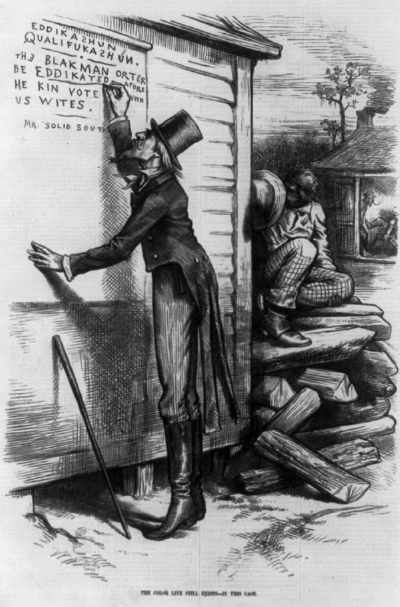
Harper’s Weekly, v. 23 (1879 Jan. 18), p. 52
“Eddikashun qualifukashun. The Black man orter be eddikated afore he kin vote with US Wites, signed Mr. Solid South.”
The fact that a few educated blacks qualified to vote by getting by the literacy tests doesn’t obviate the fact that said literacy requirements were designed to exclude people of color in the southern United States.
Similarly, the fact that some foreign teachers (Seagal no longer lives in Japan, and I can think of only one other example) may slip through doesn’t make the policy any less discriminatory.
Am I saying that the Aikikai deliberately implemented a racially discriminatory policy?
Honestly, I have no idea what their intentions were.
However, whether or not their intentions were pure – the effect was to create a policy that is clearly discriminatory, and that will not change as long as a double standard favoring Japanese over non-Japanese is in existence.
The “Shihan” designated by the International Regulations under this two tiered policy seem not to mind being made to sit in the back of the bus – it is pretty comfortable back there after all…but I often wonder why more protest is not made.
One of the few voices that I’ve seen with the courage to speak openly on the matter on the public record is Aikikai Shihan Yoshimitsu Yamada, in this interview from March 2013 with Leo Tamaki (which demonstrates the persistence of this issue, despite the fact that Mr. Tani’s statements occurred more than ten years ago):
Leo Tamaki: What is the title of shihan?
Yamada Yoshimitsu: It is a stupid system. In Japan, one calls his teacher shihan, regardless of rank. Shihan is an occupation, a job, it is not a distinction. People misunderstand what it means. It is not a title! It is simply a more formal way to call a sensei. For example, when one is filling an official form, one does not write as a job: “Aikido sensei”, one writes shihan. It is nothing more than that. The Japanese are uncomfortable because of the system they have put in place and they know that they have made a mistake. It causes them a lot of headaches, and to me too! (laughs)
Today, everyone is seeking that status as if it were a title. But just as for grades, everyone present himself or herself a bit differently to get this recognition because there are no standards. Today we often get to situations where such complaints are made: “Why is this guy a shihan and I am not? I have the same rank and have I practiced for as many years”. These are stupid conflicts that happen because of this system. Why do they need it? If people call me sensei that is just fine, I do not care to be called shihan.
Leo Tamaki: But the Japanese do get the title of shihan automatically don’t they?
Yamada Yoshimitsu: This is one thing I do not like. This is actually why I started issuing shihan titles to foreigners, because they wondered why it was reserved for the Japanese. They do a lot of dumb things at the Aikikai, they invent titles regularly. For young people, they made up the title of shidobu shihan. Tamura Sensei and I had a slightly different title I think (laughs). These things are ridiculous.
Last year a group [from France] gave me a list of about 20 people, but the Aikikai selected only three of them. So I said “I cannot go back and explain that only three of them will receive this title. Forget it and give me back the list”. I went back, explained the situation, and told them to negotiate themselves, that I was out of it. How did the Aikikai chose these three people that they did not know? Based on what criteria? The only one who knew them was their master. Moreover, some of the older practitioners in that group were not included in these twenty names because they had bad relations with their officials. This is not my problem but it was not fair. And when I got the title for one of those elders, the group got angry against me. I said, “But why was his name not on your list? It’s not fair, and as far as I know it is one of the oldest amongst you”. All this is politics, it is terrible.
What would you do, would you sit on the back of the bus?
Christopher Li – Honolulu, HI


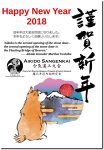

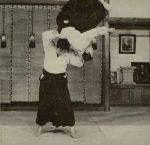

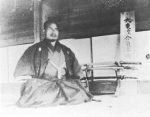
Leave a Reply